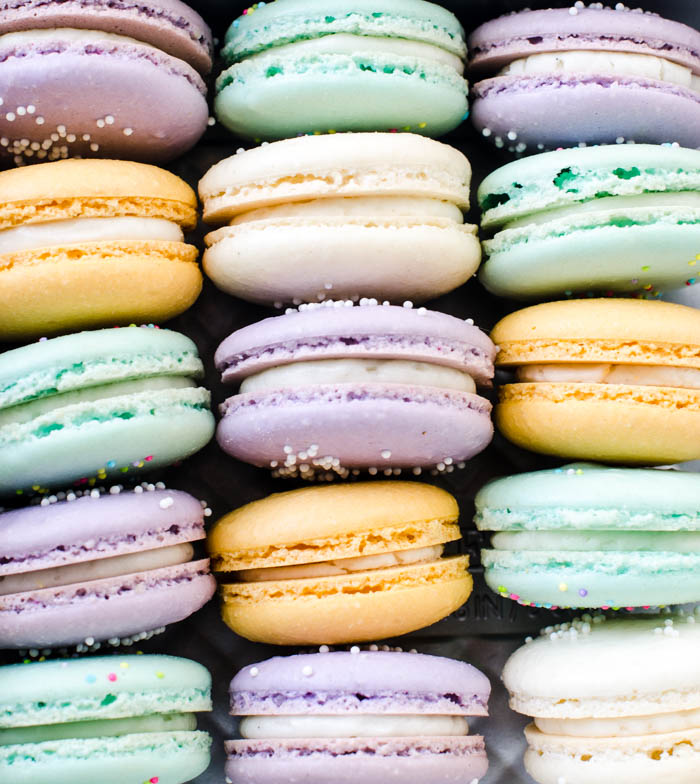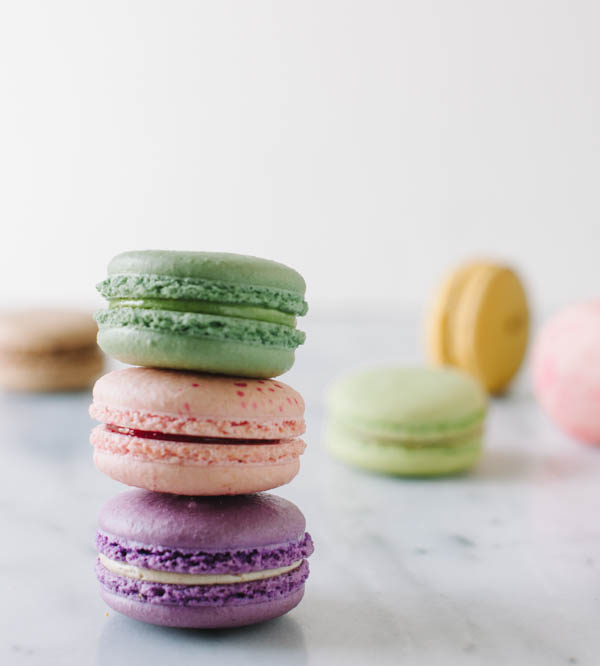
If you’ve ever attempted to make macarons at home, chances are you started with the French method. It’s the simpler of the two methods, mostly because the meringue does not have to be cooked. However, the one frustration I have found with this method is that there is no standard recipe. I think this comes from the fact that because it is so temperamental, most people have to adjust their recipe to fit their own oven. Each recipe that I tried had its own specific problems, so I decided to come up with my own. I won’t claim that my macaron recipe is the best or foolproof, but it does work consistently in my crappy conventional oven in which the temperatures fluctuate drastically, so I hope that it works equally well for you. Here’s how I came up with it (if you just want the recipe scroll to the end of the post. Also, please do not judge my OCD).
Macarons consist of four basic ingredients: egg whites, almond flour, powdered sugar, and granulated sugar. In order to come up with a recipe that worked for me, I decided to figure out what each ingredient did. This is what I found.
Egg whites are necessary in order to create a meringue, into which the almond flour and powdered sugar are folded into to create the batter. The lower the egg white content, the less moisture in the macaron batter. Macarons with a very low egg white content can sometimes turn out dry and crumbly, while macarons with a high egg white content can be too soft and soggy. Macarons with a high egg white content also take much longer to dry and can lead to cracked shells when baking. The way that the egg whites are whipped also has an effect on the finished product, but I’ll talk more about that later.
Almond flour is what gives macarons their unique texture and flavor. The amount of almond flour in recipes that use the French method also varies quite a bit, and affects the amount of moisture in the batter. I found that the ratio of egg whites to almond flour in macaron recipes was anywhere from 1:0.8 all the way up to 1:1.5.
There are two types of sugar in macarons, and each one has a different effect on the macaron. The majority of macarons had a ratio of egg whites to sugar that was anywhere between 1:2 and 1:2.5. While the total amount of sugar seemed to be pretty standard, the ratio of granulated to powdered sugar varied quite a bit. Before testing the effects of the different sugars, I decided to take out the variables and settled on a ratio of egg whites:almond flour:sugar that was 1:1.25:2.3. These ratios are close to the middle range of many recipes I tried. Then, I started varying the amounts of powdered sugar:granulated sugar within that 2.3 range.
